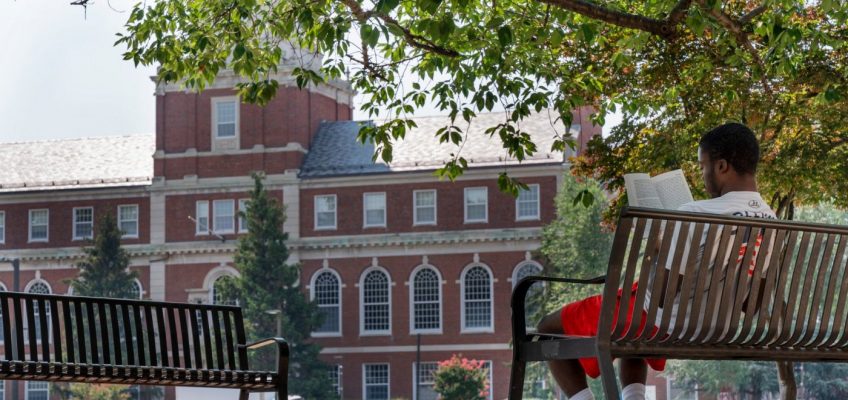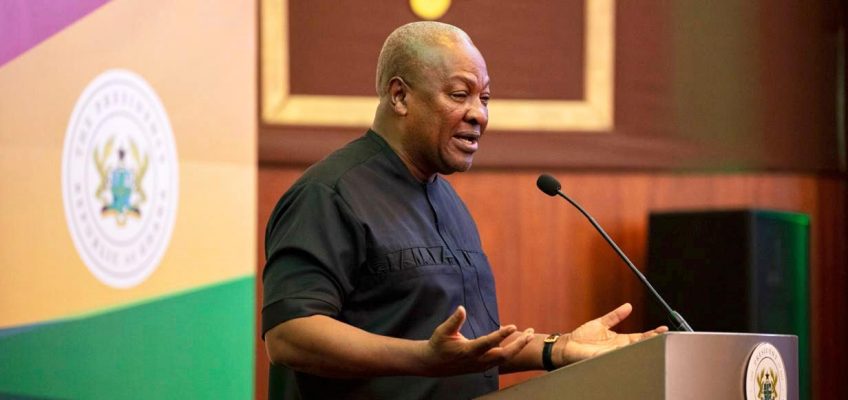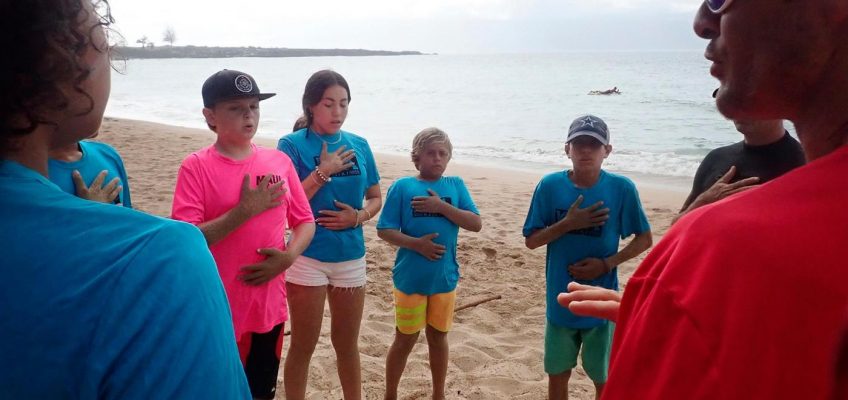By MEGAN TAGAMI of Honolulu Civil Beat, CAROLYN JONES of CalMatters and TATIANA DÍAZ RAMOS of Centro de Periodismo Investigativo
LAHAINA, Hawaii (AP) — Mia Palacio felt like she lost a piece of herself when wildfires destroyed her hometown of Lahaina.
She isolated from loved ones after the 2023 disaster while struggling to process the grief, often angry that her family didn’t have a permanent place to stay and that so many others were unable to evacuate.
Moving between high schools, she never felt welcome, Palacio said, and the pain only intensified as the months wore on. Finally, near the first anniversary of the fires, Palacio reached out for help.
Hundreds of students like Palacio have struggled mentally since the fires – and not all have received the help they need.
The Hawaii Department of Education estimates more than a third of Maui students lost a family member, sustained a serious injury or had a parent lose a job after the fires, which killed 102 people and damaged more than 3,300 properties in Lahaina.
AP is collaborating with Honolulu Civil Beat, CalMatters, Blue Ridge Public Radio, and Centro de Periodismo Investigativo in Puerto Rico to examine how school communities are recovering from the disruption of natural disasters.
Two years later, many in Lahaina are ready to return to normal. But therapists say students’ mental health challenges continue to mount.
That’s common after a disaster, especially at the two-year mark, when adrenaline wears off and stress remains high, said Christopher Knightsbridge, one of several researchers at the University of Hawaii who has studied the well-being of Lahaina fire survivors. While kids may feel numb immediately following a disaster, after two years, they’re facing the toll of constant uncertainty and change, he said.
It’s a phenomenon seen wherever schooling has been disrupted by natural disasters, reporting by Honolulu Civil Beat, The Associated Press and several other news outlets shows. But a couple years after the disaster, schools are not always prepared with extra mental health supports.
On Maui, the island is dealing with an ongoing shortage of specialists. In the past few years, the number of psychiatrists serving youth has dropped from four to two, even as demand has grown.
“The crisis isn’t over,” Knightsbridge said.
Anxiety triggered by wind or small fires
Palacio made progress with the help of a school counselor and then a local organization that supports teens’ mental health through outdoor activities and adventures.
The senior at Lahainaluna High School said she’s now more comfortable confiding in others and controlling her emotions. She takes pride in mentoring younger students who also have struggled since the fires.
Two years in, many kids still wrestle with depression and anxiety.
Maui Hero Project intern DayJahiah Valdivia, 16, talks about the group with Kahākūahi Ocean Academy in Lahaina, Hawaii, on Tuesday, June 10, 2025. (Kevin Fujii/Honolulu Civil Beat via AP)
DayJahiah Valdivia, a senior at Kīhei Charter School, said her stress levels spike when there are strong winds or small brush fires. Valdivia lives in Upcountry Maui, which also faced wildfires that burned over a thousand acres of land on the same day as the 2023 Lahaina fires. Her home was spared, but it took months for her family to return because their property was covered in soot and needed professional cleaning.
She feels less anxious now that her family members have discussed their escape plan for future disasters. But a summer fire near a friend’s home in Central Maui renewed her fears about her loved ones’ safety.
“The anxiety never really wore off,” she said. On windy days, it was especially difficult to concentrate in class or feel safe.
In a University of Hawaii study of fire survivors conducted in 2024, just over half of children reported symptoms of depression, and 30% were likely facing an anxiety disorder. Nearly half of kids in the study, ages 10 to 17, were experiencing PTSD.
Children in disaster-torn towns across the U.S. can relate.
In Paradise, California, where the 2018 Camp Fire took 85 lives, a protracted period of disillusionment followed what some called the “hero phase,” when the community pulled together and vowed to resurrect their town. Both Lahaina and Paradise had housing shortages after their fires, so families had to move away or live with friends to go to school or work in the area. In general, students who don’t have a permanent living arrangement tend to struggle more academically and have more behavioral challenges, research shows.
Many Paradise students still struggle with anxiety and grief, seven years later, making it difficult to fully engage in school. A year after the Camp Fire, 17% of students were homeless, and the suspension rate was 7.4%, compared to 2.5% statewide. The suspension rate remained nearly triple the state average last year, and more than 26% were chronically absent.
Aryah Berkowitz, who lost her home, two dogs and her family’s business in the Paradise blaze, dealt with lingering behavioral challenges following the disaster. For nearly a year afterward, her family of seven, plus a pair of surviving pit bull-Labrador mixes, lived with a friend in nearby Chico, sharing two bedrooms and a bathroom. Berkowitz, then in sixth grade, slept on the couch.
“I was having to help my family a lot and wasn’t able to handle it,” said Berkowitz , once a high-achieving student who was suspended twice after the fire. “I was holding it inside and took it out on other people. Some days I’d just walk out of class.”
Students walk to the temporary Pulelehua campus of King Kamehameha III Elementary School in Lahaina, Hawaii, on Monday, April 1, 2024. The original school was destroyed in the August 2023, fires. (Kevin Fujii/Honolulu Civil Beat via AP)
Back on Maui, many students similarly disengaged from school.
In a state survey of Maui students in the first year after the fires, roughly half of kids said they were having trouble focusing in class or felt upset when they were reminded of the wildfires.
Some have struggled to retain class material or simply stopped attending in-person classes as they moved between hotel rooms and temporary housing, Lahainaluna High teacher Jarrett Chapin said. A few moved to online learning as their families faced continued instability.
“They just sort of vanished,” Chapin said.
Maui’s ongoing shortage of mental health staff
Maui has long dealt with medical workforce challenges. Even before the fires, it faced a shortage of mental health professionals because they struggled with the state’s high cost of living and housing shortage.
The fires brought burnout and greater economic obstacles, only exacerbating the issue. Since then, Hawaii’s education department has tried to bulk up Maui’s mental health staff by bringing in providers from neighbor islands and the mainland and, more recently, using a $2 million federal grant to support students.
But hiring mental health staff has been so difficult that even the federal money hasn’t made much of a dent. In the first nine months of the grant, the state education department primarily used the money to bus displaced students from other parts of the island to Lahaina schools.
The state has used the money to hire five part-time mental health providers working with students and staff, including one specialist who works in the evenings with students living as boarders on Lahainaluna’s campus, said Kimberly Lessard, a Department of Education district specialist.
The nest is empty: Parents grapple with mixed emotions after children move out
Unproven Lyme disease tests and treatments are proliferating
Belwin opens $3.6M accessible outdoor-education facility with ‘first-class experience’ — for all
As insurers struggle with GLP-1 drug costs, some seek to wean patients off
States are taking steps to ease access to COVID-19 vaccines as they await federal recommendation
Two of the six behavioral health specialist positions in Lahaina schools remained unfilled this summer, as they have been for years due to Maui’s housing shortage and high cost of living, Lessard said.
Valdivia, who still struggles with anxiety from the Upcountry Maui fires, has seen the impacts of the provider shortage firsthand. She’s on a two- to three-month waiting list to see a psychiatrist on Maui, and she’s seeing an Oʻahu-based therapist via telehealth because there aren’t enough providers who can meet with her in person.
“Even just to get evaluated (by a psychiatrist), it’s literally months,” she said. “I just think that’s crazy.”
It’s common for disaster-torn communities to struggle with shortages of psychological staff, often because of burnout and a lack of resources.
In Puerto Rico, which has suffered from a series of disasters since Hurricane Maria struck in 2017, students have experienced high rates of anxiety, depression and post-traumatic stress disorder.
Yet despite legislation in 2000 to create more school psychologist positions, it wasn’t until the pandemic that the commonwealth’s Education Department dedicated money to hire them. Today, there are 58 vacancies across the archipelago’s 870 schools.
The school psychologists “can’t keep up,” said Nellie Zambrana, a professor of clinical psychology at the University of Puerto Rico at Río Piedras. Those who are working are overstretched, according to a study by the university’s Psychological Research Institute. One psychologist, the study said, was assigned to more than 100 students at three schools.
Kahākūahi Ocean Academy’s Zane Kekoa Schweizer, left, steers as Maui Hero Project youth paddle into the bay from D.T. Fleming Beach in Lahaina, Hawaii, on Tuesday, June 10, 2025. (Kevin Fujii/Honolulu Civil Beat via AP)
Seeking solace in adventure, peer support
Loren Lapow wasn’t deterred by the storm clouds gathering one June afternoon over D.T. Fleming Beach on Maui. The social worker helped teens carry an inflatable paddleboard to the water’s edge, cheering them on as they swam.
Amid the fun, Lapow directed the teens to reflect on their fears and losses. He asked them how they feel when they smell smoke or think about Lahaina’s famed Front Street, most of which was destroyed in the blaze.
“Places are like a friend to us,” Lapow said. “When you lose places, it hurts.”
Lapow founded the Maui Hero Project, which his website describes as “adventure-based counseling services.” The eight-week program Lapow started 25 years ago teaches teens basic disaster preparedness skills and immerses them in outdoor activities. It’s also a form of mental health support, which Lapow has leaned into since the wildfires.
Lapow’s approach has become a common strategy for nonprofits and therapists trying to reach kids who have balked at discussing their mental health since the fires. But those efforts don’t always reach the kids who need the most help.
There’s a strong stigma around seeking mental health services, particularly in Filipino and Latino communities that make up a large portion of Lahaina’s population, said Ruben Juarez, a professor at University of Hawaii who led the research study on fire survivors. Families may see counseling as a sign of weakness, and children may be reluctant to open up to therapists out of fear of being judged or scrutinized, he added.
Yet in the study, Latino teens reported the highest rates of severe depressive and PTSD symptoms. Filipino teens reported some of the highest rates of anxiety.
Maui YMCA Director of West Side Resource Center Jaylou Cabrera opens a door to their new space while it’s under renovation in Lahaina, Hawaii, on Tuesday, June 10, 2025. The center will offer various services including meeting the community’s mental-health needs after the August 2023, fires destroyed the historic West Maui town. (Kevin Fujii/Honolulu Civil Beat via AP)
The state is hoping struggling students will open up to their peers. A new program called YouthLine will train Hawaii teens to respond to crisis calls, said Keli Acquaro, who oversees youth mental health for the state.
Keakealani Cashman, who graduated from Kamehameha Schools Maui in 2024, is hoping to be part of the state’s solution to provide more mental health support to the next generation of children.
After losing her home to the fires, Cashman spent her senior year talking to Native Hawaiian practitioners and researching how cultural values, such as connections to the land and her ancestors, could help her community heal from the trauma of the fires. The project helped her own mental health improve, said Cashman, who regularly met with her school’s behavioral health specialist.
Now, Cashman is entering her second year at Brigham Young University Hawaii and hopes to work as a behavioral health specialist in Hawaiian language immersion schools
“This horrible, horrible thing happened to me and my family, but I don’t have to let it kill the rest of my life,” Cashman said. “I can really help my family, my community in school, and just make an impact in what I know how to do.”
The Associated Press’ education coverage receives financial support from multiple private foundations. AP is solely responsible for all content. Find AP’s standards for working with philanthropies, a list of supporters and funded coverage areas at AP.org.




